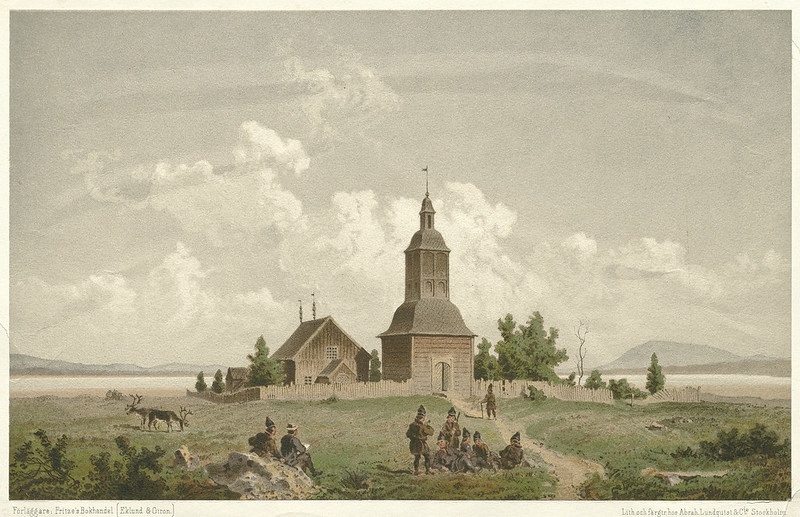For thousands of years, Sami people spent life on the move. They followed wild herds of reindeer from high coastal pastures in the summer to winter inland forests and plains. The reindeer made these migrations in search of food and relief from swarms of biting flies. They supplied meat and dairy for meals as well as warm hides for clothing and housing. Other animals like bears and ptarmigans were also hunted for food. Summer brought other opportunities for fishing and gathering. Families dried salmon, cod, and other fish they caught in rivers, lakes, and along the coast. Women gathered wild plants like the cloudberry to further round out their diet. Coffee, introduced in the 16th century, remains a popular drink and is often served with cheese.
The traditional Sami outfit is the gakti, a long tunic worn over leggings. In later centuries, the furs of the older gakti were replaced with wool, cotton, and silk, usually in shades of blue, red, and yellow. Silk shawls, silver jewelry, woven bands, and pewter embroidery are all commonly paired with modern gakti. The Sami wore many styles of hats, the most famous being the pointed four-winds hat. Regional differences in dress can identify a wearer’s family and place of origin.
The reindeer nomads needed lightweight, portable housing to pack, move, and make camp quickly. They slept in the lavvu, a hide tent similar to the tipi of North America’s Great Plains. The Sami also built more permanent homes called gamme or goahti. These houses used peat moss, hides, birch bark, and wood as insulation over a wooden frame. Along the coast, Sami housing styles eventually shifted to those of their parent nations. They took up grain farming and raised livestock like sheep, pigs, cows, and poultry. The modern lavvu is still a popular style of tent among reindeer herders and hunters.
Today’s Sami people may continue to practice elements of their traditional lifestyle. While reindeer herding is now a minority occupation, it remains one of the most visible aspects of Sami culture. Those who do remain closely tied to the land generally work in the tourism, handicraft, reindeer, or fishing industries. Others live in the major cities of Norway, Sweden, Finland, and Russia, where they pursue any number of careers. In some cases, laws originally meant to preserve Sami herding rights have made it difficult, if not impossible, for young people to make a living as herders. Balancing the interests of their communities with the preservation of their culture has become a major focus of Sami political groups.
Further Reading:
Learn More About Sami Culture
Cultural Overview | Geography | History | Daily Life | Society | Economy | Beliefs | Arts & Music
References
“History Articles.” Sami Culture, University of Texas, www.laits.utexas.edu/sami/dieda/history.htm.
Hund, Andrew J., ed. Antarctica and the Arctic Circle. Vol 1. ABC-CLIO. 2014.
“Preserving Indigenous Culture in the Arctic.” Sweden, Swedish Institute, Feb. 2014, sweden.se/wp-content/uploads/2013/06/Sami-in-Sweden-low-resolution.pdf.
Robinson, Michael P., Karim-Aly S. Kassam, and Leif Rantala. Sami Potatoes: Living with Reindeer and Perestroika. Bayeux Arts. 1998.
Sami Parliament. “The Sami: An Indigenous People in Sweden.” Samer, Samer.Se, www.samer.se/2137.
About TOTA
TOTA.world provides cultural information and sharing across the world to help you explore your Family’s Cultural History and create deep connections with the lives and cultures of your ancestors.


